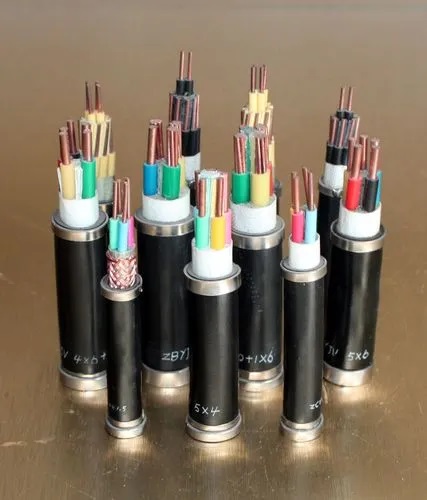Introduction
Heating, ventilation, and air conditioning (HVAC) systems are essential components of modern buildings, providing comfort and maintaining optimal indoor air quality. One crucial aspect of HVAC systems that often goes unnoticed is the control cables that play a vital role in ensuring the seamless operation of these systems. Control cables are the nerves of an HVAC system, transmitting signals between various components to regulate temperature, humidity, and airflow. In this comprehensive guide, we will delve into the world of HVAC system control cables, exploring their importance, types, installation, maintenance, and future trends.
Importance of HVAC System Control Cables
Control cables are the lifelines of an HVAC system, enabling communication between different components such as thermostats, sensors, actuators, and controllers. Without control cables, an HVAC system would be unable to function effectively, leading to inefficiencies, malfunctions, and increased energy consumption. By transmitting signals accurately and efficiently, control cables ensure that the HVAC system operates at peak performance, maintaining comfort levels while optimizing energy efficiency.
Types of HVAC System Control Cables
1. Thermostat Cables: Thermostat cables are used to connect the thermostat to the HVAC system control board. These cables transmit signals from the thermostat to the control board, instructing the system to heat or cool the space based on the set temperature.
2. Sensor Cables: Sensor cables are used to connect various sensors such as temperature sensors, humidity sensors, and pressure sensors to the control system. These sensors provide crucial data to the HVAC system, allowing it to adjust settings and maintain optimal conditions.
3. Actuator Cables: Actuator cables connect actuators, such as damper actuators and valve actuators, to the control system. These cables enable the control system to regulate airflow, temperature, and pressure by adjusting the position of the actuators.
4. Communication Cables: Communication cables are used to establish communication between different components of the HVAC system, such as between the control panel and the outdoor unit. These cables facilitate data exchange and coordination, ensuring smooth operation of the system.
Installation of HVAC System Control Cables

Proper installation of control cables is crucial for the reliable and efficient operation of an HVAC system. Here are some key considerations for installing HVAC system control cables:
1. Plan the Layout: Before installing control cables, carefully plan the layout to ensure that cables are routed efficiently and do not interfere with other components or structures. Consider factors such as cable length, routing paths, and accessibility for maintenance.
2. Use Proper Cable Types: Select control cables that are suitable for the specific requirements of the HVAC system, such as temperature ratings, insulation properties, and signal transmission capabilities. Using high-quality cables that meet industry standards will help prevent signal interference and ensure long-term reliability.
3. Follow Manufacturer Guidelines: Refer to the manufacturer's guidelines and specifications for the HVAC system components to determine the recommended cable types, sizes, and installation methods. Following these guidelines will help ensure compatibility and optimal performance.
4. Secure Cables Properly: Secure control cables using appropriate mounting hardware, such as cable ties, clamps, and conduits, to prevent damage from vibrations, environmental factors, and human interference. Proper cable management will also make future maintenance tasks easier.
5. Test and Verify Connections: After installing control cables, thoroughly test and verify all connections to ensure proper signal transmission and functionality. Use testing equipment such as multimeters and signal analyzers to check for continuity, resistance, and signal integrity.
Maintenance of HVAC System Control Cables
Regular maintenance of control cables is essential to ensure the continued operation and reliability of an HVAC system. Here are some maintenance tips for HVAC system control cables:
1. Inspect for Damage: Periodically inspect control cables for signs of damage, such as cuts, abrasions, or corrosion. Damaged cables should be replaced promptly to prevent signal loss or short circuits.
2. Clean Connections: Clean cable connections and terminals regularly to remove dirt, dust, and corrosion that can affect signal transmission. Use contact cleaners and corrosion inhibitors to maintain optimal conductivity.
3. Check for Loose Connections: Check for loose or disconnected cable connections that can cause signal interruptions or malfunctions. Tighten connections securely to ensure reliable communication between components.
4. Monitor Cable Integrity: Monitor the integrity of control cables over time to detect any signs of wear or degradation. Replace cables proactively before they fail to prevent system downtime and costly repairs.
Future Trends in HVAC System Control Cables
As technology continues to advance, the future of HVAC system control cables is poised for innovation and improvement. Some emerging trends in HVAC system control cables include:
1. Wireless Communication: The adoption of wireless communication technologies, such as Bluetooth and Wi-Fi, is gaining popularity in HVAC systems. Wireless control cables eliminate the need for physical connections, offering greater flexibility and ease of installation.
2. Smart Sensors and Actuators: Smart sensors and actuators equipped with advanced communication capabilities are being integrated into HVAC systems. These intelligent components can communicate wirelessly with the control system, enabling real-time monitoring and control.
3. Energy-Efficient Cables: The development of energy-efficient control cables that reduce power consumption and signal loss is a growing trend in the HVAC industry. These cables can help improve the overall energy efficiency of HVAC systems, leading to cost savings and environmental benefits.
Mineral Insulated Cable are the unsung heroes that ensure the smooth operation and efficiency of heating, ventilation, and air conditioning systems. By transmitting signals between components, control cables enable precise control of temperature, humidity, and airflow, providing comfort and indoor air quality. Proper installation, maintenance, and future trends in HVAC system control cables play a crucial role in optimizing system performance and energy efficiency. As technology continues to evolve, the future of HVAC system control cables holds promising advancements that will further enhance the functionality and reliability of HVAC systems.
